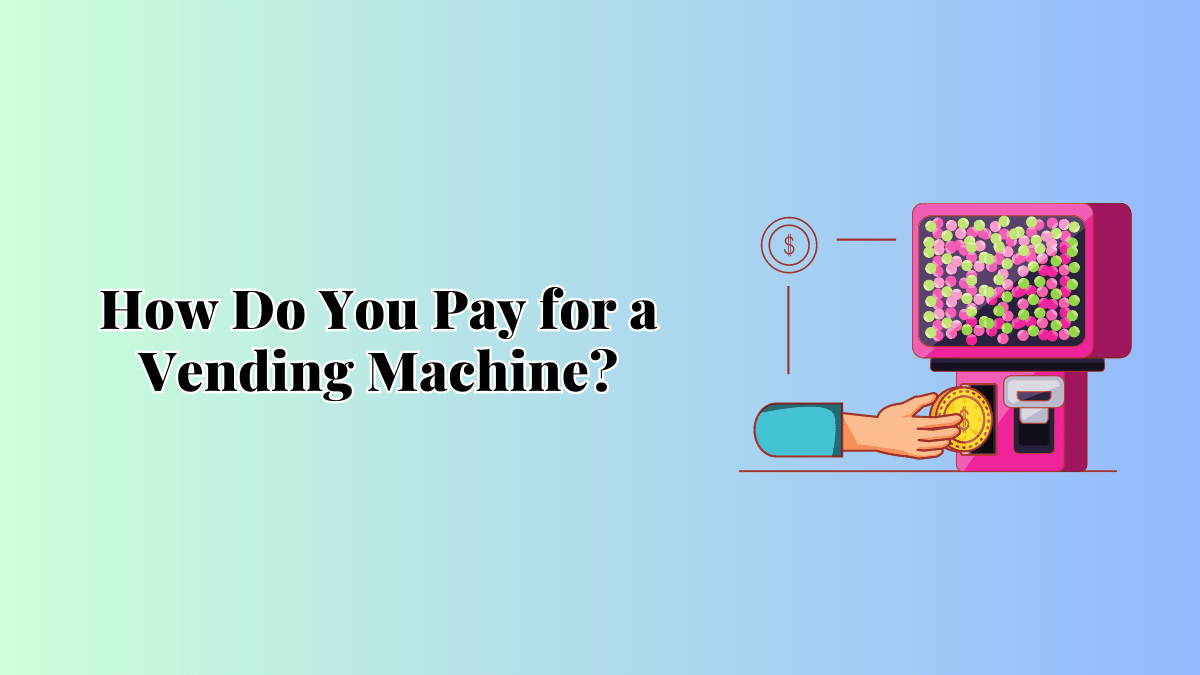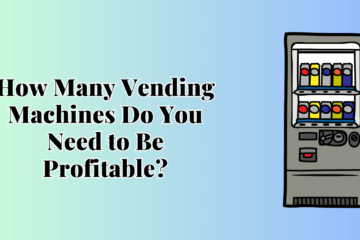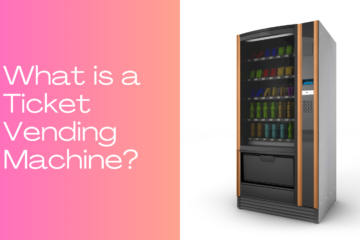Vending machines have become an integral part of our daily lives, offering convenience and quick access to various products. However, as a potential vending machine owner or operator, one of the critical aspects you must consider is how customers will pay for the products they purchase from your machines. In this comprehensive guide, we will delve into the various payment methods available for vending machines and highlight their advantages and disadvantages. Whether you’re a seasoned vending machine business owner or someone looking to start a vending machine venture, this article will equip you with valuable insights to make informed decisions. So, let’s dive into the world of vending machine payment options!
1. Cash – The Classic Choice
Paying with cash is the traditional and most common method for vending machines. Customers insert coins or paper money directly into the machine to make a purchase. This method offers simplicity and convenience for both customers and vending machine operators. Moreover, accepting cash can attract a broader customer base, including those who prefer to pay with physical currency.
However, carrying cash has become less common in today’s digital age. Additionally, managing and securing cash collections can be time-consuming and present security challenges.
2. Credit/Debit Cards – The Digital Shift
With the advent of technology, vending machines have evolved to accept credit and debit cards. This payment option offers customers the convenience of paying with plastic cards, eliminating the need to carry cash. Vending machine operators can partner with payment processors to integrate card readers into their machines, enabling seamless transactions.
Accepting credit and debit cards can increase sales by catering to customers who prefer electronic payments. It also provides an opportunity for operators to track transactions and monitor inventory remotely.
3. Mobile Payments – Tap and Go
Mobile payment systems have gained popularity due to their convenience and speed. Customers can use their smartphones or smartwatches to make payments through near-field communication (NFC) technology. This method is secure, and transactions are usually processed instantly.
Accepting mobile payments can enhance the overall customer experience, especially for tech-savvy consumers. It also allows operators to gather valuable data on customer preferences and buying patterns.
4. Contactless Payments – Safe and Hygienic
Contactless payment methods, including contactless cards and mobile wallets, have become increasingly popular, especially during the COVID-19 pandemic. Customers can make payments without physically touching the vending machine, reducing the risk of germ transmission.
Implementing contactless payment options can improve customer satisfaction and attract health-conscious individuals. Moreover, it aligns your vending machine business with current trends and customer preferences.
5. QR Code Payments – The Scanning Solution
QR code payments involve customers scanning a unique QR code displayed on the vending machine using their smartphone camera. The code links to a payment gateway, allowing customers to complete the transaction swiftly.
QR code payments are cost-effective to implement and provide a seamless payment experience for customers. They are especially popular in regions with a high penetration of smartphone users.
Selecting the Right Payment System for Your Vending Machine Business
Now that we’ve explored various payment options, you might wonder which one is the best fit for your vending machine business. Here are some factors to consider when selecting a payment system:
a) Customer Preferences
Understanding your target audience’s payment preferences is crucial. If your target market consists of tech-savvy individuals, embracing mobile payments and contactless options may be advantageous. On the other hand, if your customers prefer traditional payment methods, cash and credit/debit cards might be sufficient.
b) Location and Environment
The location and environment where your vending machines will be placed play a significant role in the payment system’s success. For instance, in busy office spaces or shopping malls, where customers are always on the go, quick and convenient payment methods like mobile payments and contactless payments are likely to be more effective.
c) Cost and Convenience
Evaluate the costs associated with implementing different payment systems. While credit card readers and mobile payment integrations may involve upfront expenses, they can lead to increased sales and improved customer experience. Consider the convenience of each payment option for both customers and your vending machine maintenance team.
d) Security and Fraud Prevention
Security is paramount when handling customer transactions. Ensure that the payment system you choose is secure and protects sensitive customer data. Implementing fraud prevention measures can build trust with your customers and safeguard your business.
e) Analytics and Reporting
Look for payment systems that provide detailed analytics and reporting features. Tracking sales data, inventory levels, and customer behavior can help you optimize your vending machine business for better performance.
FAQs about Paying for a Vending Machine
1. How do you pay for a vending machine with cash?
To pay with cash, simply insert the appropriate coins or bills into the vending machine’s coin slot or bill validator. The machine will display the amount owed, and once the correct payment is received, the product will be dispensed.
2. Can I pay for a vending machine using multiple payment methods?
Some vending machines are equipped to accept multiple payment methods, such as cash, credit/debit cards, and mobile payments. Customers can choose their preferred payment option at the time of purchase.
3. Are there any additional fees for using credit/debit cards to pay at a vending machine?
Credit/debit card transactions may involve processing fees charged by payment processors. Vending machine operators should consider these fees when evaluating the cost-effectiveness of accepting card payments.
4. Are contactless payments secure?
Yes, contactless payments are secure. They use encryption and tokenization technology to protect sensitive payment data, making them safe for customers to use.
5. Can I offer discounts for specific payment methods?
As a vending machine operator, you have the flexibility to offer discounts or incentives for using certain payment methods. For example, you could offer a discount for customers who choose to pay with cash, encouraging cash transactions.
6. How do mobile payments work with vending machines?
Mobile payments rely on near-field communication (NFC) technology, allowing customers to make payments by tapping their smartphones or smartwatches on the vending machine’s NFC-enabled reader.
Conclusion
Selecting the right payment system for your vending machine business is a crucial decision that can significantly impact customer satisfaction and your overall success. By considering factors like customer preferences, location, costs, security, and analytics, you can make an informed choice that aligns with your business goals.
As technology continues to advance, new payment options may emerge, making it essential for vending machine operators to stay updated with the latest trends. Embracing diverse payment methods can attract a broader customer base and enhance the shopping experience for your patrons.
Remember, when deciding on a payment system, always prioritize security and customer convenience. By doing so, you’ll build trust with your customers and create a thriving vending machine business




